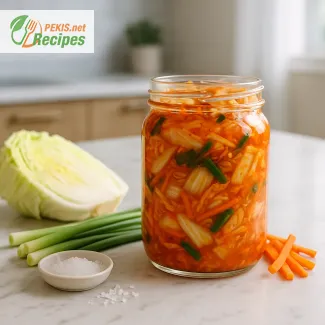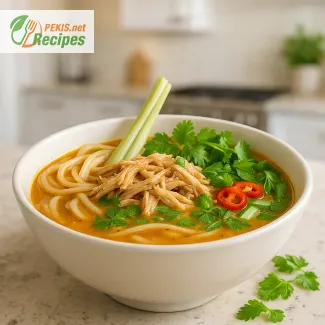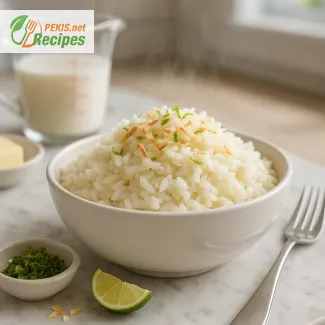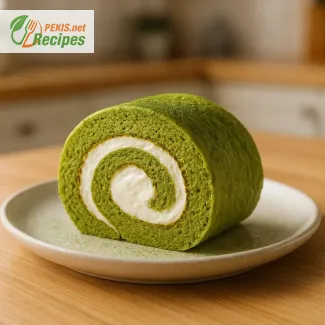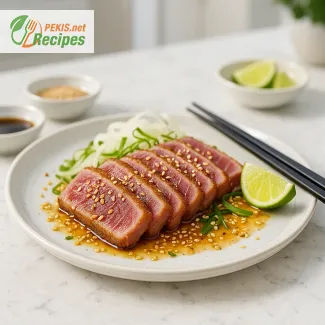
Discover the Soul of Japanese Comfort Food with This Timeless Rice Bowl
A heartwarming bowl of oyakodon that captures the essence of home cooking in Japan
There are few dishes in the world that evoke the same sense of warmth, simplicity, and deep satisfaction as a steaming bowl of oyakodon. Translating to “parent-and-child rice bowl,” this poetic name reflects the central ingredients of the dish: tender chicken and silky eggs, simmered together in a savory-sweet broth and served over fluffy white rice. With every spoonful, oyakodon delivers a balance of umami, subtle sweetness, and the rich depth of traditional Japanese cuisine that comforts both body and soul.
Oyakodon is more than just a recipe – it is a reflection of Japanese home cooking at its most soulful. This dish holds a special place in the hearts of many because it’s easy to prepare, deeply flavorful, and incredibly satisfying. While you may find variations in restaurants across Tokyo or Kyoto, the most beloved versions are always the ones lovingly prepared at home. The essence of oyakodon lies in its balance – the softness of scrambled egg, the gentle bite of chicken thigh, the aromatic mix of soy sauce and dashi, and the sweet undertone of mirin all coming together over a warm bed of steamed rice.
What sets oyakodon apart from other Japanese rice bowls is its unique technique of cooking the egg. Unlike a typical omelet or fried egg, oyakodon’s egg is gently poured into the pan at the end of cooking and left just barely set. This results in a custardy, almost cloud-like texture that envelops the savory chicken and onions in a delicate embrace. It’s a texture that feels luxurious yet light – a testament to the refined techniques of Japanese home cooking.
For those who enjoy discovering authentic flavors without spending hours in the kitchen, oyakodon is a perfect introduction to traditional Japanese comfort food. It requires minimal ingredients, most of which are pantry staples in Japanese cuisine: soy sauce, mirin, sake, sugar, dashi, eggs, onions, and boneless chicken thighs. These ingredients are easy to find and, when combined, create a dish that tastes far greater than the sum of its parts.
While the dish is traditionally enjoyed as a quick family meal, its depth of flavor and elegant presentation make it worthy of a place on any food lover’s table. With just one taste, it’s easy to see why oyakodon continues to be one of the most cherished and frequently prepared dishes in Japanese households.
The tradition behind oyakodon
Oyakodon first emerged in the late 19th century as a popular meal served at soba restaurants in Japan. Its roots are humble, but its popularity soared thanks to the comforting qualities and satisfying flavors it offered to working-class families. The name, which poetically combines "oya" (parent) for the chicken and "ko" (child) for the egg, reflects a cultural sentiment of familial connection – something that is deeply valued in Japanese food philosophy.
This dish has evolved subtly over time, but its core remains the same: a humble bowl that represents nurturing, tradition, and flavor. It embodies the simplicity and elegance for which Japanese culinary culture is globally admired. Today, oyakodon is not only served in homes but is also a staple in bento boxes, school cafeterias, and traditional eateries, cementing its place as one of Japan’s most iconic rice dishes.
Why oyakodon belongs in your weekly meal rotation
If you're looking to add variety to your weekly dinners while still keeping things wholesome and quick, oyakodon deserves a spot in your regular meal planning. Not only is it quick to prepare – usually ready in under 30 minutes – but it’s also highly adaptable. You can customize the recipe to suit your taste by adjusting the sweetness or saltiness of the broth, or even substituting the chicken for tofu or mushrooms for a vegetarian variation.
The beauty of oyakodon lies in its ability to bring together nourishment and flavor in every bite. It is both a beginner-friendly recipe and a comfort dish that seasoned cooks return to time and time again. Whether you're introducing yourself to Japanese home cooking or looking for a reliable meal that everyone will love, oyakodon stands out as a dish that delivers warmth, balance, and a sense of cultural authenticity.
A dish that brings comfort, elegance, and flavor to your table
From the soft-cooked eggs to the umami-rich broth that seeps into every grain of rice, oyakodon captures the spirit of what makes food special. It’s the kind of dish that can be prepared on a weeknight and still feel like a treat. It brings together generations of tradition, a short list of ingredients, and a universal love for warm, satisfying meals.
Whether you’re exploring Japanese recipes for the first time or looking to perfect a classic, oyakodon offers a delicious, nourishing experience that celebrates the power of simplicity. Its unique name, poetic origins, and unforgettable flavor make it a must-try for any lover of comforting meals from around the world.
- Prepare the rice:
Rinse the white rice under cold water until the water runs clear. Cook the rice according to your preferred method (rice cooker or stovetop) so it’s ready to serve warm once the topping is finished. - Slice the ingredients:
Thinly slice the onion into half-moons. Cut the chicken thighs into bite-sized pieces, approximately 2–3 cm (1 inch). - Prepare the broth:
In a bowl, mix the dashi stock with soy sauce, mirin, sake, and sugar. Stir until the sugar dissolves completely. - Simmer the base:
In a large non-stick skillet or donburi pan, heat the vegetable oil over medium heat. Add the onions and sauté them for 2–3 minutes until translucent. - Add the chicken:
Pour the prepared broth into the skillet with the onions. Add the chicken pieces and gently simmer for about 6–8 minutes until the chicken is fully cooked and tender. Turn the chicken occasionally to cook evenly. - Add the eggs:
Beat the eggs lightly in a bowl (do not overmix). Lower the heat and gently pour the eggs over the chicken and onion mixture. Cover the pan with a lid and cook for 1–2 minutes until the eggs are just set but still soft and slightly runny. - Serve:
Divide the freshly cooked rice into four bowls. Slide the hot chicken and egg mixture on top of each bowl of rice. Garnish with thinly sliced spring onion. Serve immediately.
Creative Ways to Elevate the Classic Oyakodon
Flavorful tweaks and smart techniques to enhance your Japanese chicken and egg rice bowl
Oyakodon is celebrated for its balance of umami, tender textures, and the comfort it brings with each bite. But even the most time-honored recipes can be refined or adapted for different preferences, dietary goals, or elevated culinary results. While the classic version of oyakodon is a masterclass in simplicity, there are several ways to subtly improve flavor, add nutrition, or make the dish more suitable for specific dietary needs—without losing its soul.
How ingredient quality transforms oyakodon
The most impactful way to upgrade your oyakodon lies in the quality of ingredients. Starting with free-range chicken thighs instead of generic cuts ensures juicier, more flavorful meat. Thighs contain more natural fats, which enhances the richness of the dish during simmering.
Similarly, choosing fresh eggs from local sources results in a brighter yolk and silkier texture once cooked. The difference is visible and palpable—home-prepared oyakodon using high-quality eggs will have a delicate, custard-like finish that outshines many restaurant versions.
If you want to intensify the umami factor, consider using homemade dashi instead of instant powders. Kombu (dried kelp) and katsuobushi (bonito flakes) simmered gently in water produce a broth that is richer, cleaner, and more nuanced, forming the base for an outstanding oyakodon.
Adding depth with alternative broths and aromatics
While traditional oyakodon relies on dashi, infused broths can introduce complexity. Try steeping the broth with shiitake mushrooms, leeks, or ginger slices to subtly enrich the flavor. These additions bring new aromatic layers without overpowering the core identity of the dish.
For spice lovers, a few drops of rayu (Japanese chili oil) or a sprinkle of shichimi togarashi can create a gentle heat that contrasts beautifully with the soft egg and sweet onions. These additions keep the balance while giving the dish a gentle kick.
Sweetness and salt: Adjusting the tare sauce
The tare (sauce) for oyakodon is a balanced mixture of soy sauce, mirin, sake, and sugar. Adjusting this blend is one of the easiest ways to personalize the dish. For a deeper, more savory finish, reduce the sugar slightly and add a splash of dark soy sauce or mushroom soy.
If you prefer a lighter, brighter profile, increase the mirin or use rice vinegar in small quantities to offset sweetness with a subtle tang. This approach is especially effective when making oyakodon with leaner protein alternatives like tofu or turkey.
Healthier alternatives for a modern lifestyle
Though oyakodon is relatively wholesome, a few small changes can improve its nutritional profile for health-conscious eaters. Swap white rice for brown rice or even quinoa for added fiber and minerals.
For a lower-fat version, use chicken breast instead of thighs. While it may result in slightly less juicy meat, using a richer broth or marinating the breast pieces before cooking can offset dryness.
To reduce sodium, choose low-sodium soy sauce and reduce the quantity slightly while boosting flavor with umami-packed ingredients like miso or nutritional yeast. These swaps maintain flavor while supporting heart health and overall wellness.
Vegetarian or vegan variations
It’s possible to enjoy the essence of oyakodon without animal products. Replace chicken with tofu, tempeh, or king oyster mushrooms, which mimic the texture of meat when seared. Replace eggs with a silken tofu scramble or vegan egg substitute to replicate the soft, set texture that characterizes oyakodon.
Use kombu-dashi as a base instead of traditional fish-based dashi, and opt for a soy-mirin blend to replicate the tare without compromising the dish’s authenticity. This approach respects tradition while making oyakodon accessible to plant-based eaters.
Avoiding common mistakes
Several issues can impact the final taste and texture of oyakodon:
- Overcooking the egg: One of the most crucial steps is to remove the pan from heat just as the egg begins to set. A properly cooked oyakodon should be slightly runny and silky—not firm or dry.
- Crowding the pan: Cook in smaller batches if necessary. Overcrowding prevents even cooking and can cause the chicken to steam rather than simmer.
- Undercooked rice: Since the rice forms the foundation, make sure it is properly rinsed and cooked. Undercooked or dry rice can drastically affect the dish's mouthfeel.
Making it your own while staying true to tradition
The key to improving oyakodon isn’t radical transformation—it’s in thoughtful, subtle changes that enhance the dish’s innate qualities. Whether you’re adjusting the tare, introducing new textures with garnishes like pickled daikon or nori strips, or adding a touch of freshness with chopped shiso leaves, these touches can elevate the dish without losing its comforting roots.
Many home cooks also enjoy topping oyakodon with a raw egg yolk just before serving, adding extra richness. This technique, borrowed from donburi culture, creates a luscious finish that melts into the hot rice and chicken as you eat.
Why homemade oyakodon tastes better
Homemade oyakodon not only gives you control over the ingredients, but also allows for small, personalized improvements that elevate each bowl. Cooking it yourself means you can use organic eggs, fresh produce, and your preferred protein-to-egg ratio. You can adjust the sweetness, umami, and heat to taste, and enjoy it exactly how you love it.
There’s also something emotionally satisfying about preparing oyakodon at home. The aroma of simmering broth and onions, the gentle pour of egg over chicken, and the warmth of steamed rice create a deeply personal cooking experience that no restaurant meal can replicate. The dish becomes more than just food—it becomes an expression of care and comfort.
Every great bowl of oyakodon starts with a respect for tradition and a willingness to adapt. Whether you’re seeking better nutrition, a more intense umami profile, or a creative twist, there are many ways to refine this classic recipe. By understanding the elements that make oyakodon special—and how to tweak them—you can craft a version that’s truly your own while still honoring the flavors of Japan’s culinary heritage.
Allergens present in the recipe:
- Eggs
- Soy (soy sauce)
- Gluten (soy sauce contains wheat)
Substitution tips to avoid allergens and gluten:
- Replace soy sauce with gluten-free tamari to eliminate gluten.
- Use egg replacer (such as silken tofu or vegan egg alternatives) if avoiding eggs.
- Always check labels on mirin and dashi to ensure gluten-free certification.
- Vitamin B12: 1.2 µg – supports nerve function and red blood cell formation
- Vitamin D: 2.5 µg – important for calcium absorption and immune function
- Vitamin A: 320 µg – essential for vision and immune defense
- Iron: 2.2 mg – contributes to oxygen transport in the blood
- Zinc: 2.4 mg – aids immune function and wound healing
- Phosphorus: 290 mg – necessary for bone health and energy production
- Selenium: 22 µg – antioxidant protection and thyroid function
- Selenium: 22 µg – reduces oxidative stress and supports immune system
- Flavonoids (from onion): ~10 mg – may lower inflammation and improve heart health
- Lutein and zeaxanthin (from egg yolk): ~200 µg – support eye health and reduce the risk of macular degeneration
- Choline (from eggs): 250 mg – vital for brain health and liver function
